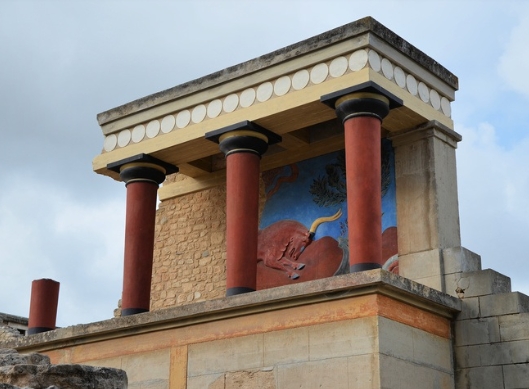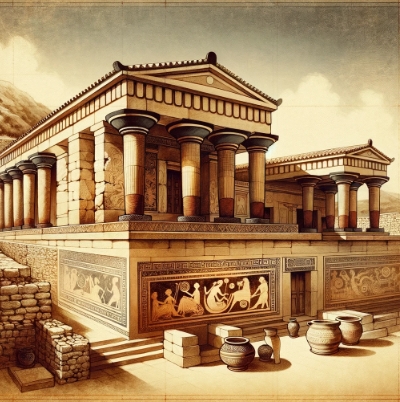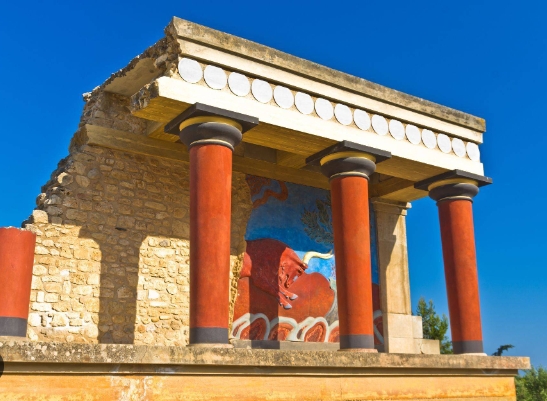The architectural style of ancient Crete represents the glory and uniqueness of the Minoan civilization and is an important chapter in the history of ancient Greek architecture. Crete, located in the Aegean Sea, is one of the birthplaces of ancient Greek civilization, and its architectural style is famous for its complex palace designs and exquisite decorations. Knossos Palace is an example of Minoan architecture. This magnificent palace is not only large in size, but also has a sophisticated layout and complex architectural structure, demonstrating the extraordinary technology and aesthetics of ancient Cretan architecture.
The architecture of the Palace of Nossos was based on stone and mudbrick, combining a complex multi-story structure with spacious courtyards and an airy room layout. The walls of the palace are decorated with a large number of exquisite murals, showing the daily life of the Minoan people, religious rituals and natural landscapes. These murals are colorful and expressive, providing us with important clues about the society and culture of the time.
The sculptural and decorative elements in Minoan architecture are equally impressive. There are not only a large number of decorations symbolizing religious beliefs and mythological stories in the palace, but also many sculptures related to nature. Although the Minoan civilization differed in architectural style from the later Greek civilization, greek statues also began to appear in Cretan architecture as decorative elements. The combination of statues and buildings not only enhanced the decorative effect of the building, but also conveyed people’s worship of gods and nature at that time.
Ancient Cretan architecture not only represents the technological progress of the Minoan civilization, but also demonstrates their pursuit of art and aesthetics. Whether it is the layout of the palace or the decorative art combined with Greek statues, the architecture of Crete laid the foundation for later ancient Greek architecture and became an important chapter that cannot be ignored in the history of world architecture.



